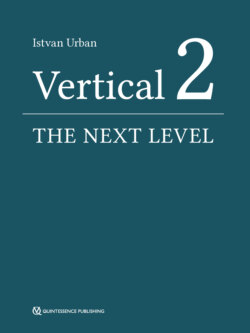Читать книгу Vertical 2: The Next Level of Hard and Soft Tissue Augmentation - Istvan Urban - Страница 9
The histology of polytetrafluoroethylene (PTFE) membranes in an in vivo setting
ОглавлениеThe mucogingival tissue is primarily characterized by a moderate vascularized fibrotic reaction that surrounds the PTFE membrane. The membrane is usually internally and externally surrounded by connective tissue that is rich in fibers and poor in cells, with the fibers oriented parallel to the membrane. Membrane pores, if present, show the presence of a highly vascularized matrix of connective tissue and a dense network of collagen fibers that penetrates across the pores to fix on the internal side of the membrane or, in some cases, to the newly formed bone.
The inner layer, which is composed of expanded PTFE (e-PTFE), is always placed against the bone of the lingual and buccal sides. A slight number of macrophages admixed with a few lymphocytes, polymorphonuclear cells, giant cells/osteoclasts, and plasma cells were observed around the membrane. Deep at the lingual side of the ridge, the membrane was often in direct contact with the bone tissue, even showing slight signs of osteointegration (Figs 1-1 to 1-4).
Figs 1-1 and 1-2 Parallel-oriented fibers around the membranes.
Fig 1-3 The membrane shows signs of osseointegration on both sides. Note the excellent biocompatibility of the polytetrafluoroethylene (PTFE) membrane.
Fig 1-4 When compared with titanium, the PTFE-membrane demonstrated similar biocompatibility.
Figs 1-5 and 1-6 Histologic results of vertical augmentation. Note the excellent new bone formation and the well-incorporated xenograft particles.
